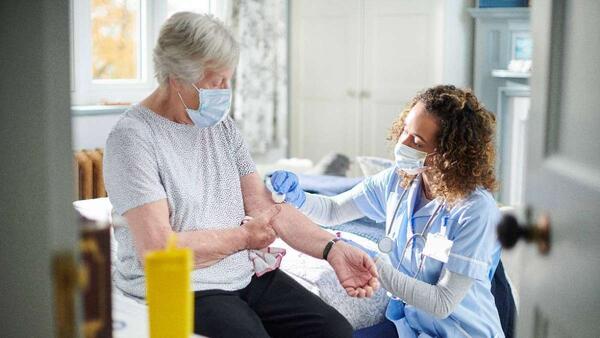
Why Elderly Patients are Most Vulnerable in the Nursing Shortage Crisis
Healthcare is a non-negotiable essential to the global economy and the health of the human population. While there have been wonderful, impressive, and important advancements made in the fields of science, technology, and medicine, many of those benefits become nullified mute without the presence of well-trained staff members.
Sadly, despite the amazing benefits that often accompany medical care, there is a
building concern within the industry that a lack of employment will have significant consequences to tend with.
In recent years, the healthcare landscape in America has been grappling with a persistent nursing shortage. As the American population continues to age the demand for nursing care has surged, particularly among elderly patients who often require complex medical support. Unfortunately, the gap between the growing needs of these patients and the numbers of available nursing staff is widening, leading to dire consequences for this vulnerable demographic.
Here are some reasons why elderly patients will be some of the most vulnerable in nursing shortages.
An Overview of The Aging Population and Healthcare Needs
The U.S. Census Bureau forecasts that by 2034, adults aged 65 and older will outnumber children for the first time in history. This demographic shift is coupled with an increased prevalence of chronic diseases such as diabetes, hypertension, and dementia, which necessitate specialized care and ongoing support. Elderly patients often have multiple comorbidities, requiring comprehensive management that can be challenging to deliver in environments with insufficient nursing staff.
The current trends, if not checked by a substantial increase in the number of medical professionals, will bring with it many different complications for companies, administrators, professionals and the patients they are trying to help. Here are some ways in which those negative impacts may demonstrate themselves.
Impact of Nursing Shortage on Elderly Care
The nursing shortage has a direct impact on the quality of care that elderly patients receive. A commitment to enhancing nursing resources is not only an investment in the healthcare system, but a moral necessity to ensure that our elderly citizens receive the dignified and compassionate care they deserve.
Here are several critical areas that highlight the vulnerabilities faced in this industry:
- Reduced Patient-to-Nurse Ratios: Many healthcare facilities, particularly nursing homes and assisted living facilities, operate with inadequate nurse-to-patient ratios. High patient loads can lead to rushed assessments and diminished attention to individual care needs, which can jeopardize patient safety and health outcomes.
- Increased Incidence of Mistakes: Research indicates that nurse workloads exceeding safe thresholds are correlated with a higher risk of medication errors, falls, and hospital-acquired infections. For elderly patients, even minor oversights can have catastrophic consequences due to their fragile health.
- Limited Access to Specialized Care: With fewer nurses available, healthcare facilities may struggle to offer specialized training and expertise needed for geriatric care. This limitation can hinder the capacity to manage complex health issues faced by elderly patients, resulting in increased hospitalizations and emergency room visits.
- Emotional and Psychological Impacts: Elderly patients are not only affected physically but also emotionally by inadequate nursing care. Many elderly individuals experience feelings of loneliness and abandonment, particularly in nursing homes where staff shortages lead to diminished social interactions. This can adversely affect their overall mental health, exacerbating conditions like depression and anxiety.
- Delayed Care and Treatment: The shortage of nurses often means that elderly patients face delays in receiving critical interventions. Prompt response to changes in health status is vital in geriatric care; delays can lead to exacerbated conditions and result in longer hospital stays or unnecessary transfers.
Addressing the Nursing Shortage
Mitigating the impact of the nursing shortage on elderly patients requires a multifaceted approach. Here are just a few ideas:
- Incentivizing the Nursing Profession: Strategies such as student loan forgiveness programs, competitive salaries, and enhanced benefits can help attract new entrants into the nursing field. Increasing the funding for nursing education programs is also essential to produce a larger workforce.
- Fostering a Supportive Work Environment: Healthcare facilities must create work environments that promote nurse well-being to retain existing staff creating more nurse leaders. This includes manageable workloads, offering mental health resources, and ensuring professional development opportunities. Many of which have been a huge problem in the proceeding years.
- Utilizing Remote Technologies: Innovations in telehealth and artificial intelligence can alleviate some pressure on nursing staff while maintaining a high level of care for elderly patients. Remote monitoring tools can provide real-time data, allowing nurses to focus on direct patient care.
- Enhancing Policy Advocacy: Policymakers must recognize the urgency of the nursing shortage and implement legislative measures to improve nurse working conditions, increase funding for graduate nursing education, and expand access.